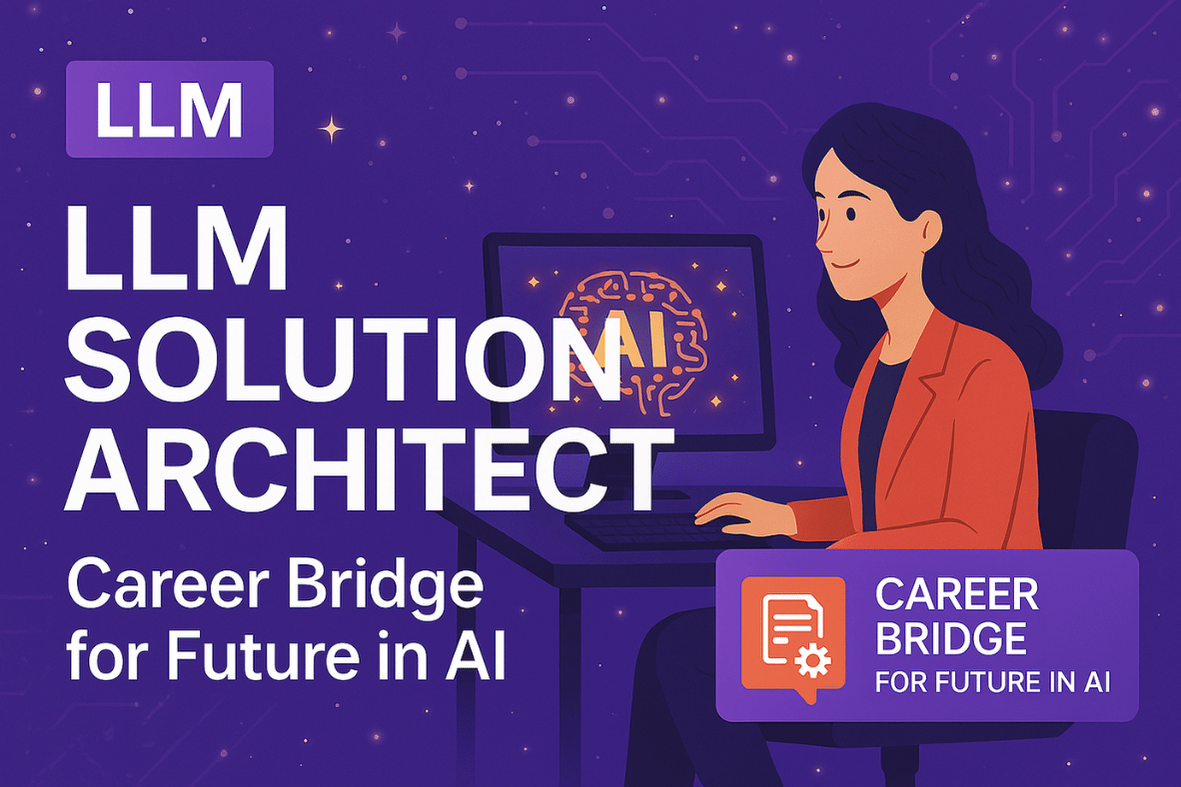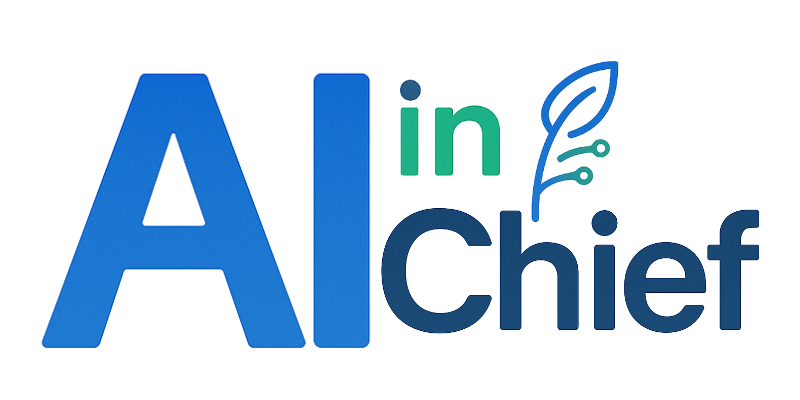LLM Solution Architect's Career Bridge for Future in AI
The explosion of Large Language Models (LLMs) is revolutionizing how we interact with machines. But building scalable, safe, and intelligent systems with these models? That’s the job of the LLM Solution Architect. This article shows you the path - from skill-building to job-readiness.

🧠 A Successful LLM Solution Architect
A successful LLM Solution Architect designs and delivers AI systems that integrate language models into real-world applications. They sit at the intersection of AI research, system design, and product delivery - ensuring that LLMs are not just functional but also safe, scalable, and valuable.
They are:
- Strategists who understand the business case for LLMs
- Technologists who select and integrate the right models and tools
- Architects who build infrastructure that supports LLM-based services
📘What You Will Learn
In this guide, you’ll explore:
- Why LLM architects are critical for the AI-powered future
- What tools, skills, and frameworks to master
- How to tailor your resume and portfolio
- How to prepare for interviews - even on short notice
🚀 Why This Role Matters in the AI Future
Every major company is either exploring or deploying LLMs - for chatbots, search, code generation, internal knowledge tools, and more. But deploying LLMs into real systems is not plug-and-play.
LLM Solution Architects are vital because they:
- Design the system architecture around LLM usage
- Balance performance, latency, safety, and cost
- Ensure explainability, reliability, and compliance
- Enable LLMs to interface with data, tools, and APIs
Without them, LLM projects become expensive prototypes. With them, LLMs become production-ready solutions.
✅ Key Success Factors for LLM Solution Architects
- Model Understanding: Know the strengths, weaknesses, and trade-offs between GPT, Claude, LLaMA, and others
- System Architecture: Design robust pipelines (RAG, streaming, hybrid models)
- Prompt Engineering: Optimize prompts for quality, cost, and speed
- Tool & API Integration: Blend LLMs with external tools, databases, and functions
- Evaluation & Monitoring: Implement evaluation metrics, tracing, and drift detection
🧩 Key Responsibilities
Typical responsibilities of an LLM Solution Architect include:
- Selecting the right LLMs (hosted vs open-source, fine-tuned vs out-of-the-box)
- Designing the architecture for scalable and cost-efficient LLM systems
- Leading the implementation of Retrieval-Augmented Generation (RAG) systems
- Managing inference pipelines, caching, and rate limits
- Collaborating with ML engineers, MLOps teams, and compliance officers
- Ensuring content safety, fairness, and model observability
🧠 Capabilities You Need to Succeed
Technical Depth:
- Prompt engineering, model selection, and temperature tuning
- RAG system design and orchestration
- Token-level understanding (max tokens, context windows, embeddings)
Architectural Skills:
- Cloud-native architecture (AWS/GCP/Azure)
- Integration with tools via function calling, agents, or APIs
- Cost optimization and load balancing for inference
Operational Knowledge:
- Monitoring and feedback loops
- Guardrails and content moderation
- Secure deployment, data governance, and user access control
🛠️ Top Tools to Learn and Crack the Interview
| Area | Tools/Frameworks |
|---|---|
| LLM APIs | OpenAI, Anthropic, Cohere, HuggingFace |
| Orchestration | LangChain, LlamaIndex, Flowise |
| RAG & Search | FAISS, Pinecone, Weaviate, ChromaDB |
| Prompt Management | PromptLayer, LangSmith, Guardrails AI |
| Model Deployment | FastAPI, Ray Serve, Docker, Kubernetes |
| Evaluation | TruLens, Ragas, Evidently AI |
📝 Top Keywords to Include in Your CV
Make your resume stand out with these keywords:
- “LLM architecture and orchestration”
- “Retrieval-Augmented Generation (RAG)”
- “LLM model evaluation and prompt tuning”
- “Integration with external tools/APIs via function calling”
- “Enterprise deployment of OpenAI/Claude/LLaMA models”
- “Guardrails and safe LLM deployment practices”
- “End-to-end Gen AI solution design”
📣 Don’t Have the Experience Yet?
💼 No problem!
We offer an internship program where you’ll build a real-world LLM application - complete with mentorship, code reviews, and resume-building opportunities.
⏱️ Only 1 Hour to Prepare? Do This:
- Understand RAG systems: how they combine search with LLMs
- Skim LangChain’s documentation and architecture examples
- Review the differences between GPT-4, Claude, LLaMA
- Learn how OpenAI’s function calling works
- Have 1-2 use cases ready where LLMs solve business problems
📅 Prep Plan: 1 Day → 1 Week → 4 Weeks
🕐 1 Day Plan
- Watch a crash course on LLM-powered applications
- Build a simple LLM Q&A app using LangChain or Streamlit
- Add LLM architecture as a section in your resume
🧠 1 Week Plan
- Build a basic RAG pipeline and integrate OpenAI API
- Learn to cache and batch prompts for cost-efficiency
- Read case studies on LLM deployment in industry
🚀 4 Weeks Mastery
- Create a full-stack Gen AI project (LLM + RAG + vector DB + UI)
- Optimize prompt templates and evaluate outputs using TruLens
- Share your learning journey on LinkedIn or Medium
- Mock interviews and feedback from peers or mentors
✨ Final Thoughts
The LLM Solution Architect is your bridge into AI’s most powerful frontier. As businesses invest in LLMs, they need architects who can turn capabilities into impact.
This is your chance to step up and lead the AI transformation.
🚀 Ready to begin?
👉 Apply for our internship program and build your first LLM-powered system today.

